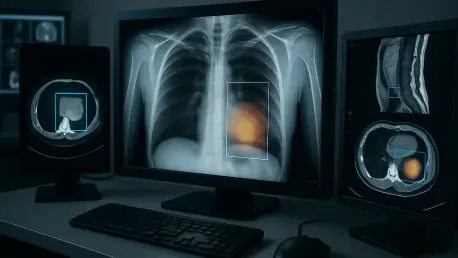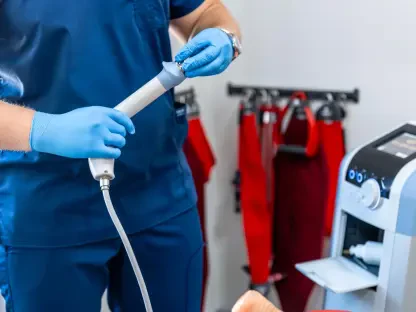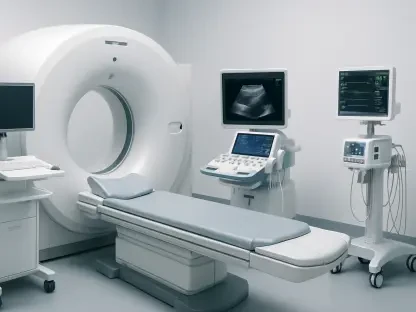Allow me to introduce James Maitland, a trailblazer in robotics and IoT applications in medicine, whose passion for harnessing technology to revolutionize healthcare solutions has positioned him as a leading voice in the field. In this insightful conversation, we explore the transformative power of AI-ready data in radiology, delving into the journey from raw imaging data to strategic innovation, the pressures facing radiology departments today, and the critical role of standardized data in unlocking AI’s full potential. We also discuss how cutting-edge tools are helping healthcare organizations navigate these challenges and what the future holds for imaging as a driver of precision medicine.
Can you start by explaining what AI-ready data means in the context of radiology, and why it’s so crucial for AI to work effectively in this field?
Absolutely, Julia. AI-ready data in radiology refers to imaging data that’s been standardized, structured, and contextualized so that AI algorithms can process and analyze it effectively. This means the data is consistent, complete with proper metadata, and free from issues like duplicated identifiers or fragmented storage. It’s crucial because AI relies on high-quality input to deliver accurate outputs. Without AI-ready data, even the most sophisticated algorithms can produce unreliable results, which could affect everything from diagnosis to treatment planning. It’s the foundation that allows AI to accelerate workflows, improve precision, and ultimately enhance patient care.
What are some common issues with raw imaging data that prevent it from being AI-ready?
Raw imaging data often comes with a host of problems. For starters, it’s frequently inconsistent—think duplicated patient identifiers or incomplete metadata that makes it hard to match studies to the right individual. Then there’s the issue of siloed storage, where data is scattered across different systems like PACS or EHRs, with no easy way to access or integrate it. These inconsistencies and fragmentation create barriers for AI, as the algorithms struggle to interpret data that isn’t uniform or well-organized. It’s like trying to solve a puzzle with missing or mismatched pieces.
Can you walk me through the AI-Ready Data Value Framework and how it transforms raw data into strategic value for healthcare organizations?
I’d be happy to. The AI-Ready Data Value Framework is a layered approach that maps out the journey from raw data to strategic transformation. It starts at Level 1 with raw data, which is often messy and costly to store with little clinical value. At Level 2, data becomes organized and accessible, indexed across systems for basic reporting. Level 3 is where standardization and normalization happen—metadata is corrected, and identifiers are unified, laying the groundwork for AI. By Level 4, we see intelligent workflows, where AI optimizes study routing or flags urgent cases. Level 5 empowers decisions with analytics and predictive models for both clinicians and executives. Finally, at Level 6, we reach strategic transformation, where imaging data drives precision health, research, and even new business models. Each level builds on the last, turning data into a powerful asset.
Why are radiology departments under so much pressure right now, and how does this impact their day-to-day operations?
Radiology departments are facing a perfect storm of challenges. Study volumes are skyrocketing as populations age and chronic diseases rise, while the complexity of cases is increasing with advanced imaging techniques. At the same time, there’s a growing demand for precision and speed in diagnosis. This translates to heavier workloads for radiologists, often leading to burnout, and operational bottlenecks as departments struggle to keep up. Day-to-day, it means longer wait times for results, potential delays in patient care, and a constant push to do more with limited resources.
How do you see AI helping to ease these pressures in radiology?
AI has tremendous potential to lighten the load. When powered by AI-ready data, it can automate repetitive tasks like sorting studies or flagging critical findings, allowing radiologists to focus on complex cases. It can also streamline workflows by prioritizing urgent scans, reducing wait times for patients. Beyond that, AI can assist in diagnosis by highlighting potential issues in images, acting as a second set of eyes. This not only boosts efficiency but also helps reduce burnout by cutting down on mundane work and improving accuracy, ultimately benefiting both staff and patients.
Why do even the best AI algorithms fail without AI-ready data, and what are the consequences of using inconsistent or incomplete data?
AI algorithms are only as good as the data they’re trained on and process. Without AI-ready data, which is standardized and complete, the algorithms can’t make sense of the input. Inconsistent data—like varying formats or missing context—leads to errors in analysis, while incomplete data can cause blind spots in predictions or diagnoses. The consequences are significant: misdiagnoses, delayed treatments, or even biased outcomes if the data isn’t representative. In a field like radiology, where precision is everything, poor data quality can directly harm patient care and undermine trust in AI tools.
How are innovative solutions helping healthcare organizations tackle the challenge of preparing data for AI in radiology?
Companies in this space are stepping up with platforms designed to standardize and normalize imaging data at scale. These solutions focus on curating data—correcting metadata, unifying identifiers, and ensuring consistency across systems. They also implement governance and security measures to protect patient information while making data accessible for AI applications. By addressing these foundational issues, such tools help organizations move up the AI-Ready Data Value Framework, turning fragmented data into a usable resource for better clinical and operational outcomes.
What specific benefits have you seen for radiologists and patients when AI is integrated with properly prepared data?
When AI works with well-prepared data, the benefits are striking. For radiologists, it means faster, more accurate diagnoses since AI can highlight subtle findings or prioritize urgent cases, reducing the cognitive load. This also helps cut down on burnout, as they’re not bogged down by repetitive tasks. For patients, it translates to quicker results and more tailored treatments, as AI can support risk stratification or personalized care plans. Overall, it creates a more efficient system where both radiologists and patients experience better outcomes.
What is your forecast for the future of imaging and AI in healthcare over the next decade?
I’m incredibly optimistic about the future. Over the next decade, I believe AI and imaging will become inseparable, with AI-ready data as the backbone of precision medicine. We’ll see radiology evolve from a diagnostic service into a strategic driver of healthcare innovation, powering everything from population health analytics to groundbreaking research. Imaging data will fuel new partnerships and business models, while AI tools become even more intuitive, seamlessly integrated into clinical workflows. For patients, this means faster, more accurate care, and for healthcare systems, it’s an opportunity to lead with data-driven transformation. I think we’re just scratching the surface of what’s possible.









